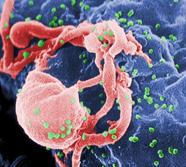 Digital News Report – HIV patients with healthy immune systems are less likely transmit the virus to their partners if they are being treated with antiretrovirals.
Digital News Report – HIV patients with healthy immune systems are less likely transmit the virus to their partners if they are being treated with antiretrovirals.
A large-scale clinical study by the National Institute of Allergy and Infectious Diseases (NIAID) supports these new findings. Previous research suggested that treated individuals were less infectious, but more evidence was needed support that conclusion.
“This new finding convincingly demonstrates that treating the infected individual—and doing so sooner rather than later—can have a major impact on reducing HIV transmission,” said NIAID Director Anthony S. Fauci, M.D.
Couples were randomly assigned to two groups. The first group immediately began treatment, taking a combination of three drugs. In the second group they were given therapy when their CD4 counts fell below 250 cells/mm3 or an AIDS-related event occured.
The difference was so pronounced that the investigators recommended that the deferred study be discontinued. All of the patients began taking the drugs right away.
Most of the study participants (97%) were heterosexual, so there is still no “definitive conclusions about effectiveness in men who have sex with men”.
Here is the list of 11 HIV drugs that were used in various combinations:
atazanavir (300 mg once daily)
didanosine (400 mg once daily)
efavirenz (600 mg once daily)
emtricitabine/tenofovir disoproxil fumarate (200 mg emtricitabine/300 mg tenofovir disoproxil fumarate once daily)
lamivudine (300 mg once daily)
lopinavir/ritonavir 800/200 mg once daily (QD) or lopinavir/ritonavir 400/100 mg twice daily (BID)
nevirapine (200 mg taken once daily for 14 days followed by 200 mg taken twice daily)
ritonavir (100 mg once daily, used only to boost atazanavir)
stavudine (weight-dependent dosage)
tenofovir disoproxil fumarate (300 mg once daily)
zidovudine/lamivudine (150 mg lamivudine/300 mg zidovudine taken orally twice daily)
By Jason Chang
Health Reporter
Photo: Scanning electron micrograph of HIV-1 (in green) budding from cultured lymphocyte. Multiple round bumps on cell surface represent sites of assembly and budding of virions. Source: Wikimedia via CDC
